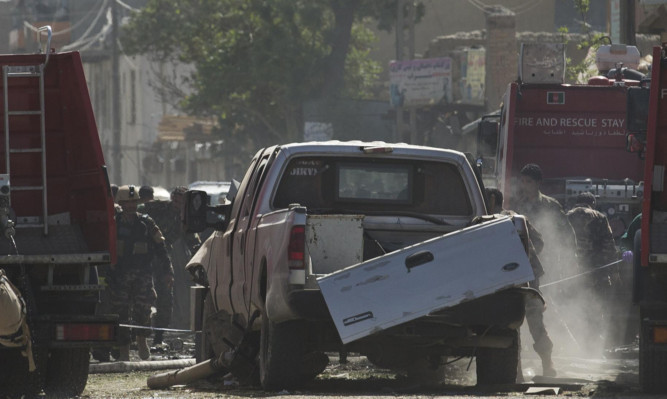Two Nato troops and four civilian contractors were killed when a suicide car bomber struck a convoy belonging to the military alliance in the Afghan capital.
At least two children also died in Thursday’s powerful explosion in eastern Kabul. The attacker rammed a car packed with explosives into the convoy as it passed the home of an Afghan politician.
Officials said more than 30 people were wounded.
Nato said its members died but did not confirm the nationality of the victims.
A Muslim militant group, Hizb-e-Islami, claimed responsibility for the attack.
The group says it struck an American convoy and that it has formed a special “martyrdom” unit to attack foreign troops.
Kabul provincial police spokesman Hashmad Stanakzi said: “The explosion was very big. It set the nearby buildings on fire.”
Kabul deputy police chief Daud Amin said it was difficult to immediately estimate the number of dead because the blast shredded many of the victims. “We saw two dead bodies of children on the ground, but the rest of the bodies were scattered in pieces around.”
A spokesman for the miltant group, Haroon Zarghoon, said one of the movement’s operatives carried out the attack on what he described as two vehicles of American advisers. He claimed that most of the American advisers were killed and their vehicles destroyed.
Hizb-e-Islami is headed by 65-year-old former warlord Gubuddin Hekmatyar, a former Afghan prime minister and one-time US ally who is now listed as a terrorist by Washington. The militia has thousands of fighters and followers across the country’s north and east.
The attack was the second in eight months claimed by Hizb-e-Islami. In September, the militant group claimed a suicide car bombing that killed least 12 people.
